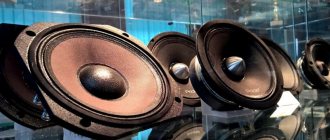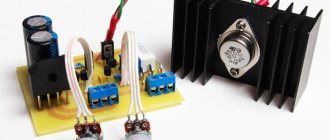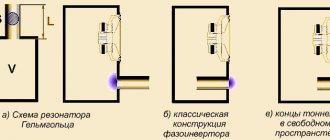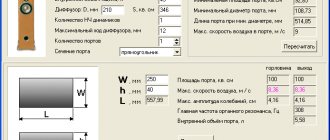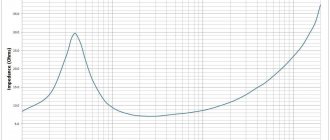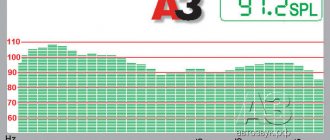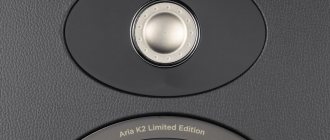From house and techno to drum and bass, we've compiled a selection of the best dance tracks to test the quality of the system
Save and read later -
What is a test track? Simply put, this is music that you are very familiar with, with which you can determine how well the system sounds. When replacing any of its components or getting acquainted with a potential future purchase, listening to selected test songs will help you understand what has changed in the sound, and thus obtain information about the device or audio path as a whole.
We actively use this tool in our work when comparatively testing various products to understand how, for example, the sound of one pair of speakers differs from another when playing the same song. In truth, nothing special is required from such tracks.
For them, the perfect quality of recording or production work is not necessary. It is only important that you know them well and can notice the differences. And, of course, so that you enjoy listening to them. Otherwise, what's the point in all this?
Some songs are better suited for testing than others because they allow you to evaluate certain aspects of the music: rhythm, dynamics, voice processing, stereo panorama, quality of high and low frequencies. A collection of tracks that fully reveals them simplifies the process of comparative testing. But remember the main thing: these should be compositions that you love.
We offer our selection of the best dance tracks for testing the system; they can also be considered excellent examples of electronic music. We hope you enjoy them.
Tangerine Dream – Love On A Real Train (1984)
The soundtrack to a mid-range teen comedy starring Tom Cruise is not the most obvious candidate for a synthesizer music classic, but in the film Risky Business you can hear the most popular composition of Tangerine Dream. The band is responsible for much of the film's soundtrack, with its dramatic and expressive synth melodies perfectly suited to the action on screen. If you don't forget about everything in those four minutes, your system is probably lacking in rhythm and emotion.
Radiohead - The national anthem (to check overall balance) (2000)
Radiohead's "The national anthem" is a dense, multi-tiered musical cake, with acoustic and electronic instruments firing in all directions (not to mention a brass ensemble that seems to be in the wrong place). Everything is dialed up to eleven: from the processing of Thom Yorke's vocals and the distorted sound of the bass guitar to the howling of the theremin in the background...
The speakers must strike the perfect balance between organization and attack, between dynamism and poise and, most importantly, between control and refusal across the entire frequency range... When done correctly, it's simply a breathtaking cacophony.
Larry Heard - What About This Love? (1989)
With these deep synthesized bass lines, warm piano sounds and soft enveloping vocals we are transported from Detroit to Chicago. Larry Heard's classic dance compositions could be the subject of a separate article, and his influence on the acoustic side of house music remains significant today. Perhaps thanks to his jazz and soul roots, his works are much more complex than conventional dance tracks; Many intricate modulations will not let your system relax for a moment.
Chemical Brothers - Das Spiegel (to test attack and decay)
You'll be hard pressed to find a more extensive, truncated, and completely abridged collection of electronically produced sounds... That's why Das Spiegel is a great test of your speakers' discipline when it comes to attack and decay. Aside from the drumming rhythm guitar and blown melodics, every sound here seemed designed to appear out of nowhere and then disappear just as suddenly...
From the tetrahedral sweep of the drum pattern to the squeaks, hisses and creaks in the background as the melody builds, control must be military. And the droning, almost continuous bass only makes the ordeal worse.
Aphex Twin – Ageispolis (1992)
One of the standouts of Aphex Twin's back catalogue, both in terms of musical quality and system testing. While some of the production decisions can sometimes make you wonder if your hearing is okay (especially on some vinyl releases), there are some great points to test here.
We love the super-deep lows that pierce the bassline on Ageispolis. Scatterings of fast-paced cymbals provide a pleasant counterbalance to them, then they are supplemented by “cinema” synthesizers and highs with echoes. One of the best tracks from the classic vinyl album Selected Ambient Works 85-92.
Test discs for listening: my selection
Yes, what insults!))) I don’t argue with anyone, but simply express my opinion, but not physics, but a lyricist who judges the sound not by the given frequency response and decibels, but solely by his own ears, without any blind fanaticism in any way -or the monastic faith and the opinions of other gurus with a Hoffman halo))) And if, for example, the same Henderson is a high-level professional sound engineer who recorded one of the standard sound Breakfast, then I hear this result, as well as the cool sound that he made it for the pink album, although perhaps in a hurry!)))
We, I understand, are on approximately the same wavelength with you, analog guys of the generation of the 70s from the wonderful era of developed socialism with the human face of Leonid Ilyich))), who read approximately the same books during our school years and were then drawn into the magical whirlwind of hard rock , tasting the sounds of Hipov, Perplov, Zeppelin, Sabbatov, Queen, Floyd, Crimson, etc.,... and I also heard machinists for the first time in 1978 (!), first on a reel-to-reel, with surprise (and resistance:) discovering that rock, it turns out, can be sung in Russian (but that’s all - any comparison with the Rollings and the Beatles, and even more so to say that the drivers are cooler, I always thought was funny and inappropriate :), and soon I went to their concert in the summer in the Green Theater, it seems in Zheleznodorozhny with a sip of the first port wine 777 or Caucasus))), and then a series of their sessions rushed around the villages near Moscow (sometimes the opening act was Visokosniki with Sitkovetsky, Kutikov and Kelmi), which lasted for a year, which ended for me in April 1979 in Reutovo on the program “The Little Prince” (they then had Saulsky Jr. on keyboards), after which I left for 2 years to repay my debt to my homeland, just like the Captain before me - a wonderful person with a great sense of humor (RIP), whose book “Blame It All” The Beatles”, of course I read it, and more than once, enjoying the lively language and sparkling humor!))) I even read Podgorodetsky’s “The Machine with the Jews”, a very funny book, I highly recommend it....)))
PS I heard a collection of Tsets recorded on Ebbik, but only half-heartedly and not from a physical medium and not on my system, via and semi-via are not my topic, although I respect Stas very much as a true hippie in his state of mind, the sound seemed excellent, who would doubt it , especially since the songs were replayed and re-covered by high-class musicians, but frankly speaking, their songs are not built on multi-layered musical structures, unlike the same Time Machine, in which I absolutely agree with VAN.
PSS Well, if such a binge has gone on, then on topic of the thread, here are a few of my test songs/discs, which I play to evaluate the sound of the new high-fi (without the rock of the late 60s - 70s and relatively modern neo-prog):
— 10СС — Deceptive Bents — immediately the first Good Morning Judge! Well, then it’s already difficult to press stop*
- 10CC - Bloody Tourists - first Dread Lock Holiday - * same
- Dire Straits - On Every Street - I immediately put 3rd When It Comes To You (but, damn, how they sold it in salons, in the “00s” everyone loved to put You And Your Friend as a reference demo , I remember once getting there at a moment where this thing was playing at several points one after another! Especially the guys from Yamaha were tirelessly playing it, they were just there promoting some kind of mediocre acoustics to the masses!)))
- Tom Petty - Wildflowers - the 2nd thing, and of course, It's Good To Be King, and the whole album... however, like almost any Petty album, I love it - good guy (RIP)
— Traveling Wilburys — VOL1 — Tweeter And The Monkey Man — and basically the whole album)))
— George Harrison — Cloud Nine — the thing of the same name, and then on the list)))
— Paul McCartney — Flaming Pie — World Tonight — yes, damn it, the whole thing )))
— JJ Cale — To Tulsa And Back — the very first My Gal
— Eagles — Long Road To Eden — any thing
- Eric Clapton & Friends - Tribute To JJ Cale - in full
No, it’s a useless exercise, you can include so many things here, there are just a ton of beautifully recorded blues-rock albums)))
...and of course everyone’s favorite pink album))) Just kidding, for some reason I don’t use the Russians as a test, although our teams from the first league are Aquarium-DDT-Kalinov Most-Picnic-Alice - Spleen..., even rock burgundy Pasha Kashin) , have been written superbly since the mid-90s, they can be nominated for a Grammy together with Stephen Wilson, who is generally beyond competition, especially for rating 5.1 both his works and mixes of prog classics!)))
That's it, escape, sorry if I made a mistake somewhere, I was in a hurry...)))
Peshay – Psychosis (1994)
If you've always thought that drum and bass is something with booming and swinging bass lines and broken breakbeat rhythms, then this is partly true, but there are also more “intelligent” works in this genre.
The drums in one of Pesce's early works are closer in spirit to jazz than club, and your system will have a lot to think about as it recreates hits and rolls of varying weights and textures. Soaring strings and voices add another layer of complexity, and to keep the woofers from getting bored, punchy bass is provided.
Bob Marley and the Wailers - Turn Your Lights Down Low (for a sense of space)
Bob Marley takes much of the credit for bringing reggae to a global audience. But Island Records' insistence on high-gloss sound quality made this traditionally gritty genre more accessible. “Turn Your Lights Down Low” demonstrates this perfectly: a spacious recording in which each instrument is anchored in its own area of the soundstage... Just space...
Speakers must describe the position of each player on stage and, most importantly, the space between them, so that the slow simmer and intensity of the melody have full impact. Not many songs use space as a tool as effectively as this one.
Why do you need to set up a subwoofer?
In short - so that with its help low musical frequencies are reproduced as accurately as possible. If the device is configured correctly, the dynamic range of music playback expands significantly, which allows the car enthusiast to capture sound vibrations not only with the ears, but literally with the whole body.
An ordinary pair of car speakers will not cope with this task. The speakers perfectly transmit high and medium sound frequencies, but they have a serious problem with bass transmission, which arises due to their design features. So if a car enthusiast wants to listen to music in all its splendor, he will have to install and configure an additional device, which is a subwoofer.
The process of setting up a car subwoofer
First, it should be said that setting up this device usually begins at the stage of creating a wooden box for the subwoofer. Even then, the dimensions of the car’s interior, the power of the connected amplifier and the direction of music that the driver prefers to listen to are taken into account. Then comes the fine-tuning of the filters, which is what we'll focus on.
LPF filter
LPF is turned on either on the subwoofer amplifier or in the radio. The abbreviation LPF stands for low pass filter. The purpose of the filter is to pass low frequencies to the subwoofer speaker, cutting off high frequencies.
LPF filter is adjustable with a screwdriver
- access to the LPF regulator is available (usually it is located on the rear wall of the amplifier);
- Using a regular flat-head screwdriver, this regulator is turned clockwise to a frequency of 55–60 Hz. This is the optimal cutoff frequency for most mid-price car subwoofers (it may need to be slightly adjusted in the future);
Subsonic
The purpose of the Subsonic filter is to cut off infrasound. It is he who cuts out the parasitic frequencies below 25–30 Hz, which were mentioned above. However, not every subwoofer is equipped with this filter, which should be remembered.
Subsonic filter control is not available on all amplifiers
- The Subsonic filter control is also located on the back cover of the subwoofer amplifier;
- using a flat screwdriver, turn this knob to an amount that will be approximately 5 Hz below the frequency of the bass reflex port;
Example: If the bass reflex operates at 40 Hz, then the Subsonic should be set to 35 Hz. And the standard frequency of the bass reflex can be found in the instructions for the subwoofer.
Adjusting the Gain level
Gain is the subwoofer's input sensitivity level. And it also needs to be adjusted (on some amplifiers this level is indicated by the word Level).
The Gain level control is rotated with a flat screwdriver
- The Gain control can be located either on the rear or front panel of the amplifier. It all depends on the specific model;
- the regulator handle has an arrow-shaped slot into which a flat-head screwdriver is inserted (the range of adjustable voltages usually varies from 0.2 to 5 volts);
- First, the Gain control is set to minimum, after which a music signal begins to be sent from the radio to the subwoofer with a gradual increase in volume. It is fed until the first sound distortions appear;
- as soon as this happens, the volume knob of the radio is turned back until clear sound appears;
- now the Gain control is turned clockwise using a screwdriver until the first distortion appears;
- after they appear, the regulator is unscrewed back a couple of notches until high-quality sound appears;
Setting the acoustic phase
If the phasing is set correctly, the subwoofer will sound together with the front speakers. If the subwoofer, according to the driver, rumbles somewhere in the trunk area, then the acoustic phase should be adjusted.
- The phase shifter control is located on the front wall of the subwoofer amplifier and is designated as Acoustic phase;
- it is turned manually clockwise until the phase “unfolds” at the desired angle and the subwoofer sounds as one with the front speakers;
Setting the subwoofer and midrange interface
The following task is being pursued here: to match the frequencies of the subwoofer and front speakers as accurately as possible. For example, if the low frequencies of the subwoofer are cut to 60 Hz, and the “low” in the speakers is set to 100 Hz, then clearly audible dips may appear in the sound of these devices. To eliminate them, you will need to adjust the LPF filter, which has already been mentioned.
- music rich in low frequencies is fed to the speakers and subwoofer amplifier;
- The LPF filter regulator is first turned with a screwdriver a couple of notches counterclockwise, and if the dips do not disappear - three notches clockwise. Usually this is enough to accurately match the frequencies of the speakers and subwoofer;
George Gershwin - Rhapsody in Blue (to check the range)
The ability to go from “really quiet” to “really really loud,” whether with a voice, a single instrument, or a large symphony orchestra in full attack mode, is an important “talent” in a loudspeaker. And there are few pieces of music as useful in demonstrating the dynamic power of an orchestra as Gershwin's Rhapsody in Blue!
Within the first two minutes, it switches from plaintive piano to overdriven strings/brass/percussion and back again several times... And each time, your speakers should switch instantly and without undue strain. This is not as simple as it may seem...
Thundercat - Uh Uh (to test bass control)
Californian bassist Thundercat delivered one of the most critically acclaimed albums of 2022 with “Uh Uh,” a brief but grueling exploration of six-string electric bass. He plays with such insane virtuosity that your speakers have nowhere to hide...
Bass extension, speed, tonal variation, and attack and release are all put to the test that acoustic engineers fear. What is required here is a clearly defined, well-described variation in tonality and note intensity. In the right hands it's a remarkably athletic game, but in less skilled hands it's just a low-end mess.
Music for setting up the subwoofer
There are special programs (so-called tone generators) that allow you to configure the subwoofer in your car. This is convenient and fast, but one simple detail should not be forgotten: the person in the car will listen to music, not the tone generator. And he will rely not on the oscilloscope display, but on his own ears. Therefore, the subwoofer should be checked only with the help of music, so as not to fall out of the audio context. And when choosing music to check, you should remember that in any piece of music there are two types of low frequencies:
- The bottoms are useful.
- The lows are parasitic.
So, you can (and should) get rid of parasitic lows with the help of proper subwoofer settings. A simple example: rap, hip-hop, dubstep and other modern styles often use very low frequencies, not exceeding 25 Hz. The human ear practically does not perceive such a frequency. People can feel it only on a physiological level (it causes a certain discomfort). These are “parasitic lows”, the removal of which a person will not notice. It is mainly electronic music that suffers from an abundance of such lows.
Hence the conclusion: the best option for testing a subwoofer would be music that involves not electronic, but real instruments. A good option could be classical works, which also have enough low frequencies.
Using classical music to configure the subwoofer, you can solve 2 problems at once:
- firstly, real instruments rarely produce sounds with a frequency below 30 Hz, accordingly, the level of parasitic lows will be kept to a minimum;
- secondly, a person has a great idea of how this or that live instrument sounds (which cannot be said about electronic instruments). Perhaps he even heard the sound of live instruments in a conservatory or somewhere else. Accordingly, he will have the opportunity to compare the sound of a live instrument with what the subwoofer gives him. And if the difference in sound is significant, a person will always be able to adjust the subwoofer more accurately, since he has something to focus on;
Sex Pistols - Pretty Vacant (to check focus stereo)
Although it was considered dangerous to British civilization at the time, the Sex Pistols did not appear to be any threat at all. And they really sound great here!
Considering what they had to work with (guitar, bass and drums of a rather primitive type, as well as vocals that, while compelling, are hardly melodic paradigms), Chris Thomas's production of "Pretty Vacant" is almost a miracle! With the shape and placement of the drum kit absolutely explicit, it carefully tests the speakers' ability to create a cohesive image of the entire scene.


